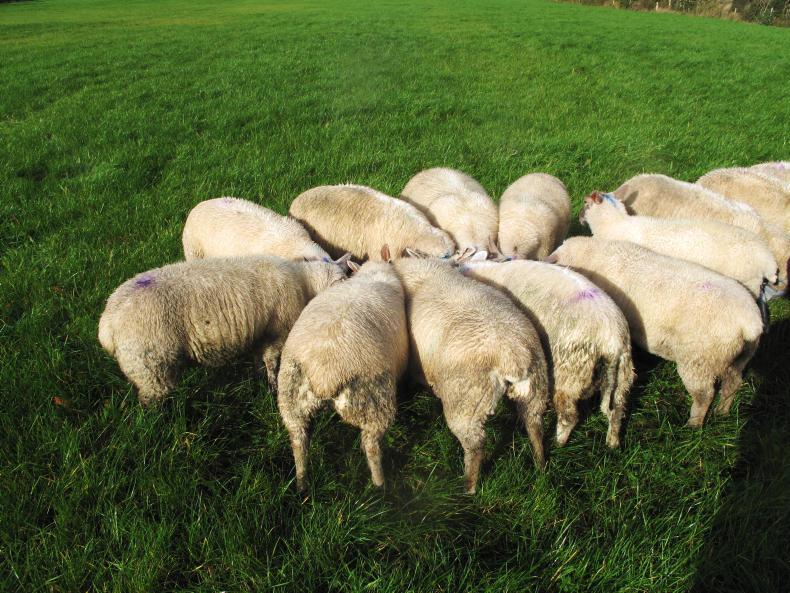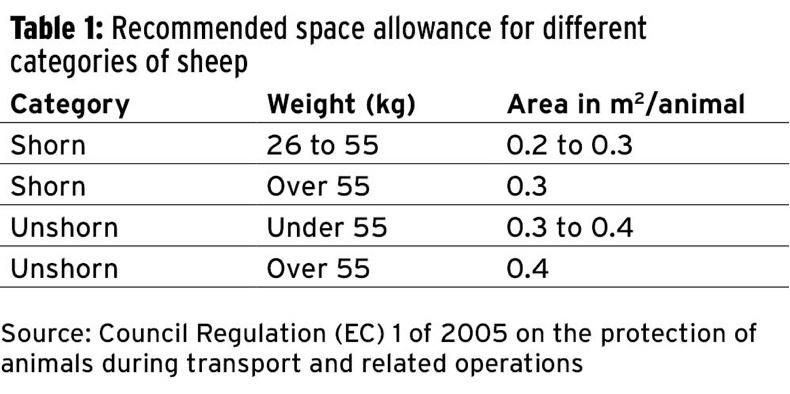
LOYALTY CODE:
The paper code cannot be redeemed when browsing in private/incognito mode. Please go to a normal browser window and enter the code there

LOYALTY CODE:
The paper code cannot be redeemed when browsing in private/incognito mode. Please go to a normal browser window and enter the code there
This content is copyright protected!
However, if you would like to share the information in this article, you may use the headline, summary and link below:
Title: Clean livestock policy – feeding and transport
Last week, Darren Carty reported on Department photographic guidelines for adhering to the clean livestock policy. This week, he focuses on feed and transport issues.
https://www.farmersjournal.ie/clean-livestock-policy-feeding-and-transport-315929

ENTER YOUR LOYALTY CODE:
The reader loyalty code gives you full access to the site from when you enter it until the following Wednesday at 9pm. Find your unique code on the back page of Irish Country Living every week.

CODE ACCEPTED

You have full access to farmersjournal.ie on this browser until 9pm next Wednesday. Thank you for buying the paper and using the code.

CODE NOT VALID
Please try again or contact us.
For assistance, call 01 4199525
or email subs@farmersjournal.ie
Sign in

Incorrect details
Please try again or reset password
If would like to speak to a member of
our team, please call us on 01-4199525
Reset
password
Please enter your email address and we
will send you a link to reset your password

If would like to speak to a member of
our team, please call us on 01-4199525
Link sent to
your email
address
![]()
We have sent an email to your address.
Please click on the link in this email to reset
your password. If you can't find it in your inbox,
please check your spam folder. If you can't
find the email, please call us on 01-4199525.
![]()
Email address
not recognised
There is no subscription associated with this email
address. To read our subscriber-only content.
please subscribe or use the reader loyalty code.
If would like to speak to a member of
our team, please call us on 01-4199525
 This is a subscriber-only article
This is a subscriber-only article
Update Success !










Farmers are the first port of call in the clean livestock policy. If sheep leave the farm in a poor condition then there is a much greater risk of animals being rejected for slaughter. The Department’s clean livestock policy contains advice to reduce the risk of sheep ending up in category B and category C. Teagasc has also put together two guideline documents – one for farmers and one for hauliers or those transporting sheep. The main messages from these are included in the following article.
Finishing at grass
Drafting lambs from a grass-based diet is the most common finishing system practiced in Ireland. The following recommendations can help:
Forage/root crops
Finishing lambs on forage crops became more popular in the last two years given the increased availability of forage crops planted to meet cross-compliance and the Green Low-Carbon Agri-Environmental Scheme (GLAS) requirements.
Inclement weather has restricted opportunities for shearing lambs. Teagasc advises crutching or dagging lambs before turning on to crops.
Sheep should be allowed time to adjust to the new diet by restricting access and providing a grass runback or free access to hay.
Similar to supplementation at grass, if supplementing with concentrates or hay, move feeding points regularly to avoid poaching.
Sheep should have a dry lying area to limit soiling of the fleece. On free-draining soils, the crop itself may provide this. On heavy soils, or during wet weather, Teagasc advises that a grass runback or straw-bedded area should be provided.
Finishing indoors
Animals should be finished in a well-ventilated shed that is suitable for the job at hand.
Shearing will help to keep lambs cleaner, but is not vital. Trials have shown no increase in animal performance between shorn and unshorn lambs.
In straw-bedded sheds, replenishing straw regularly and adhering to recommended stocking rates will help greatly.
In slatted sheds, ensuring slats do not become blocked is important in preventing a build-up of soiled material.
Allow adequate space at troughs and keep on top of any lameness issues.
Try to house animals dry.
Selecting the most appropriate finishing diet
The finishing diet offered can have a significant influence on the cleanliness of lambs. There has been a sharp increase in recent weeks in the number of farmers supplementing finishing lambs, with the aim of combating the low dry matter content and lower feeding value of grass along with improving daily liveweight and slaughter performance. The following Teagasc recommendations can help prevent feeding issues related to high-concentrate finishing diets.
Increase levels of concentrates slowly and avoid sudden changes to the diet to prevent dietary upsets and scouring.
Avoid feeding low dry matter diets (low DM silage, beet, etc).
Feed rations that are properly balanced for fibre, energy and protein.
Avoid feeding excess salt, as this increases water intake and urine production. Note also to include ammonium chloride at 0.5% of the finishing diet to protect against urinary calculi.
If feeding high-starch diets, avoid finely ground ingredients – feed a percentage of the cereal in whole or cracked form.
Pre-sale management and transport advice
The way animals are managed in the run-up to sale can have a big bearing on their suitability for slaughter. Firstly, animals should be handled in an environment that gives the best opportunity to prevent fleece contamination.
Handling animals on straw bedding, slats or appropriate bedding will deliver more suitable working conditions than concrete or a soiled hardcore area, for example.
Where animals have been grazing on wet underfoot and muddy conditions, then the best option may be to house animals and allow time for the fleece to dry out. Processors can better handle animals that are dry and somewhat soiled over those that are soiled and wet. Lambs with dirty tail-ends should be dagged.
It is advisable to withdraw feed before transport, as this will greatly cut down on the potential for lambs to soil one another. Teagasc recommends withdrawing feed for a minimum of eight hours and a maximum of 12 hours, with animals offered free access to water at all times. For animals travelling long distances, it is important to liaise with your processor.

Lambs transported incorrectly can put the entire group at risk of failing to meet the required cleanliness. For example, one lamb with a dirty tail-end or scouring can contaminate the fleece of many more, particularly if lambs are wet when loading. For this reason, it is important to adhere to the recommendations listed above. The Teagasc guidelines below are also important to follow:
SHARING OPTIONS: